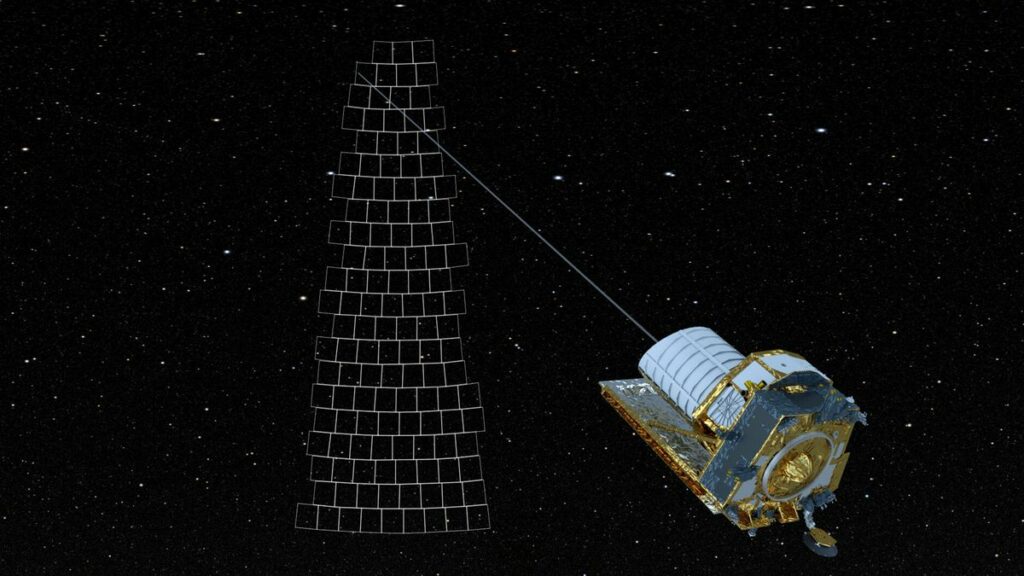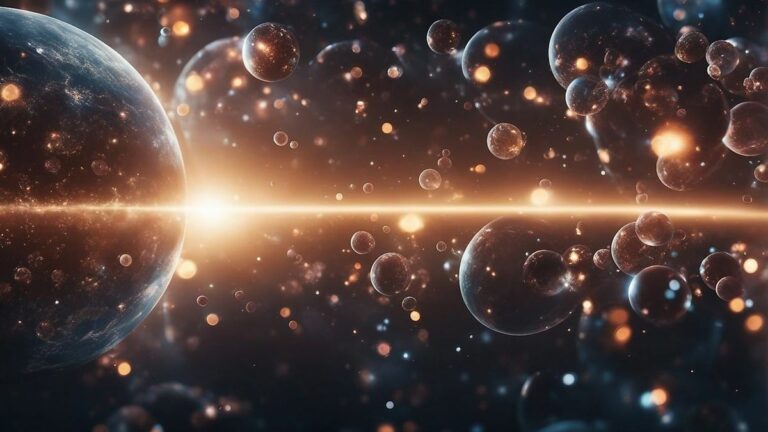According to a recent theoretical study, the expansion of our universe is being driven by the merging of ‘baby universes’.
A new theoretical study suggests that our universe may be continuously colliding with and assimilating smaller ‘baby universes,’ instead of attributing the cause of the universe’s accelerating expansion to dark energy. Despite the consensus, not all scientists agree on the role of dark energy in this phenomenon.
The expansion of our universe at an ever-accelerating rate is a well-established phenomenon in cosmology, yet it remains a mystery that defies full explanation. However, a recent theoretical study proposes a fascinating solution: the continuous collision and absorption of “baby” parallel universes may be the driving force behind our universe’s expansion.
Examinations of the cosmic microwave background, the residual radiation from the Big Bang, have provided evidence of the accelerated expansion of our universe. In order to align this observation with the Standard Cosmological Model, the prevailing theory of cosmic evolution, physicists have introduced the concept of dark energy. This enigmatic substance is believed to be responsible for propelling the expansion.
Nevertheless, dark energy does not manifest itself in any other detectable form, leading many astrophysicists to question its existence and consider alternative explanations for the universe’s expansion.
In a recent publication on December 12, 2023, in the Journal of Cosmology and Astroparticle Physics, researchers have put forward a new hypothesis regarding the expansion of the universe. They suggest that instead of being driven solely by dark energy, the accelerated expansion could be a result of the continuous merging with other universes.
Jan Ambjørn, the lead author of the study and a physicist at Copenhagen University, explained in an email to LiveScience that their work’s primary discovery is the possibility of a straightforward and intuitive explanation for the accelerated expansion of our universe. This explanation involves the merging of our universe with what are known as “baby universes.” Interestingly, the proposed model for this phenomenon appears to align better with the available data than the standard cosmological model.
Swallowing cosmic ‘babies’
This study presents a novel approach to the concept of multiple universes interacting with our own. By developing a mathematical model, the researchers aim to investigate the potential effects of such interactions on the evolution of our universe. Through their calculations, the scientists have determined that the merging of universes would result in an increase in the volume of our universe. This expansion could be detected by our instruments, leading to the perception of an expanding universe.
Furthermore, the scientists have utilized their theory to calculate the rate of expansion of the universe. Remarkably, their calculations align more closely with observations of the universe compared to the traditional Standard Cosmological Model. This suggests that their innovative approach provides a more accurate representation of the universe’s behavior.

The problem of cosmological inflation, the rapid expansion of the universe in its early moments, is also addressed by the theory proposed by the authors. Previously, physicists suggested that this expansion was caused by a hypothetical field called “the inflaton,” which drove the ultra-rapid expansion after the Big Bang. However, the authors of the new study propose a different explanation. They suggest that the super-rapid early expansion could have occurred because our young universe was absorbed by a larger universe.
In their paper, the researchers state, “The fact that the Universe has expanded rapidly in a very short time invites the suggestion that this expansion was caused by a collision with a larger universe, meaning that our Universe was absorbed by another ‘parent’ universe.” They acknowledge that the details of this absorption process are not yet known, making it difficult to determine if this scenario could actually solve the problems that inflation was intended to address. However, one interesting aspect of this scenario is that it eliminates the need for an inflaton field.
According to the scientists, after being absorbed, our newly enlarged universe continued to collide with other “baby universes” and incorporate them as well.
While the authors’ theory offers potential solutions to important cosmological problems, it is crucial to validate their hypothesis through observational data. Numerous experiments are currently underway to study the properties of the microwave background, which may provide answers to these fundamental questions in the near future.
Yoshiyuki Watabiki, a physicist at the Tokyo Institute of Technology, informed Live Science that the expansion of our Universe in recent times deviates from the standard cosmological predictions. He expressed confidence that the Euclid telescope and the James Webb telescope will provide crucial observations to determine the most accurate model for describing the current expansion of our Universe.
Do not forget to share your opinion with us to provide you with the best posts !




0 Comments